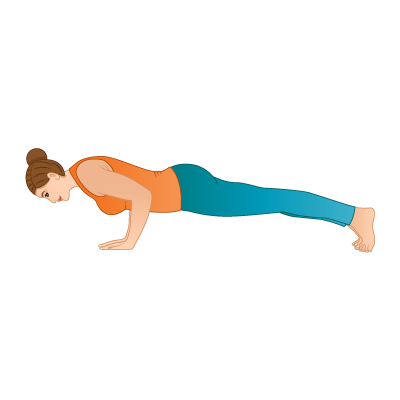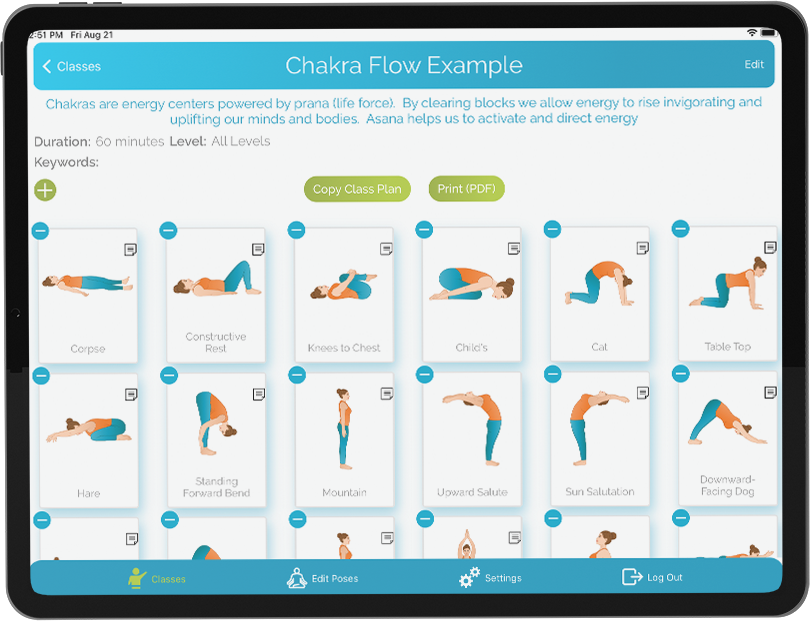3 creative Yoga class theme ideas for Winter
January 13, 2017 | 7 min read
Sequencing your yoga class theme around winter will bring a renewed sense of purpose to your teaching. This is particularly true during the festive season, when many of your students may be distracted from their practice by everything from office parties to late night shopping at the mall. This is however the season when most people really do need a yoga class. Weaving a winter theme into your yoga classes is an inspired way to get your students back on the mat and happy to be there.
Working with themes is a popular method of conceptual teaching in all forms of instruction from classroom to gym. A theme is a topic or motif around which you teach different disciplines or skills that are all centred around one definite concept. Class themes make complex ideas and theories more relatable to students. For the purposes of yoga, you might think of themes as a holistic approach to introducing ideas such as using yoga for grounding, cleansing, healing, etc. Themes are a great way to make your Yoga classes more interesting, bringing a fresh perspective to set sequences and basic poses. Below are five creative themes to get you started.
Celebrate the Winter solstice
December 21st, is the first day of winter and is celebrated as the winter solstice. This day is the both the shortest and darkest day of the year. The term solstice actually means ‘sun standing still’. From December 22 onwards the days gradually become lighter until the summer solstice, the longest day of the year on June 20st then the cycle begins again. Most cultures celebrate this time as a gradual return of light. For yogi’s, the winter solstice is a time for finding the light within to fire our intentions for the coming year.
Set the scene: Place flameless candles around the room, with one in the center. If possible arrange student’s mats in a circle or semi-circle. Ask students to sit on a folded blanket in the middle of their mat. Choose a mellow playlist of yogi music, rather than holiday favourites.
Explain the theme: Take 5-10 minutes explaining the concept of intention-setting. Hand out paper and pens. Give your students a few minutes to ask questions and discuss their intentions, then write their three solstice intentions onto the paper. This should be folded and placed under a corner of the mat.
Light a Fire with the Breath: Remind students that the winter solstice was once celebrated with a yule log, but that today you will be using yogic breath (ujjayi ) to warm the body. Ask your students to imagine the heat of a fire flowing in and out of their body as they inhale and exhale. Guide their breath, from the base of spine up through the low belly.
Sequence: For Iyengar, vinyasa flow or power class you might consider building your sequence around ’The Three Kings’ of arm balances: crow pose, side plank and handstand. As they practice each, remind them of their intentions. Ask them to them to focus on a different one, for each of the three kings. Verbal cues should focus on grounding (hands and or feet to earth), centering (imagine the essence of heat at the solar plexus), balancing (Hold yourself with love and imagine the flame at your heart. For gentle yoga classes, substitute inversions for knees-chest-chin –cobra salutes, squats and spinal roll-ups, great for energising and warming the body. Use verbal cues such as ‘feel the light of the flame within you and imagine your intentions radiating outward’. To close, have your students return to their seated positions. Ask them to repeat their intentions out loud, together. Close with a chant or meditation.
Throw a Winter Yoga Restorative Savasana Party
Restorative yoga encourages complete relaxation and release of emotional tension. The five to six basic poses for restorative yoga are based on the teachings of B.K.S. Iyengar to relieve the effects of depression and chronic stress. Restorative yoga is therefore a perfect antidote for holiday fatigue. That doesn’t mean you can’t have some festive fun. On the contrary, you might work this theme as a costume party, providing Santa caps for everyone , freebie eye pillows or lavender bags. Alternatively, you might host a mini-overnight retreat; flannel P.J.’s anyone?
Set the scene: Have some hot cider and donuts or cocoa and cookies on hand as students come in. Keep the lights seasonal, but low, fairy lights strung across the back wall and flameless candles along the sides of the room will create the warm, welcoming atmosphere you will cultivate for the rest of the class. Be sure to have plenty of bolsters and blankets on hand for students set up camp, where ever they feel comfortable, grabbing extra blankets, pillows etc as needed.
Explain the theme: Take 5-10 minutes describing the purpose and benefits of restorative yoga – to rest and relax. Allow for student discussion of favourite poses and props as ways to wind down. Offer some alternatives for home practice, such as lying on the floor with legs supported on a chair seat or up the wall. If possible extend the discussion to mindful practice; the importance of developing a mind-body-spirit dialogue on and off the mat.
Practice Complete Breath: In savasana, guide your students through a whole body relaxation, focusing on one body part at a time from toes to head crown. Maintain their awareness on the breath, especially the sides of the chest. Ask them to begin drawing into the lungs, slowly expanding the ribcage to full capacity, then fully exhale, allowing the diaphragm to push upward, drawing the belly button to the spine. Ask your students to feel the breath like the swell of the sea.
Sequence
Begin and end in full savasana. Describe the detailed benefits of savasana to ‘bring us back to life’ – the opposite of corpse. Too many of us take savasana for granted (sometimes leaving class instead of enjoying the asana’s natural power to help us reboot during the winter months) From savasana gently roll into supported child’s pose, bringing the bolster under the belly. Ask students to tap into their inner child, allowing the breath to flow effortlessly, relaxing mind and body. Spend 10 minutes here, encouraging your students to ‘let go of strains and stress’ before moving into supported animal resting pose with a twist. Simply let the left hips drop to the side. Draw the bolster close to the chest, resting the head at the top. Encourage your students not to ‘do the pose’ but to receive it like a ‘holiday gift’. Follow this with reclining bound angle pose, supported bridge, legs up the wall and savasana with a bolster under the knees. Spend ten minutes in each pose, encouraging deep relaxation, using visual cues such as ‘floating on a cloud’ and “deep sense of ease” .
Reboot Your Yoga Practice
The short days and long nights can take their toll on student’s mood and energy levels. Seasonal Depression Disorder or winter blues affects people hen there is less natural light. Although only 4-6% of the population suffer from SAD, many more of us will at some point fall into the winter blahs, suffering lower than normal energy levels and lowered immune systems. To counter these negative effects, requires additional self-care and attention to energy levels, which may be depleted by lack of exercise and sun.
Posted in Health & Wellness, Teaching Resources, Teaching Tips




